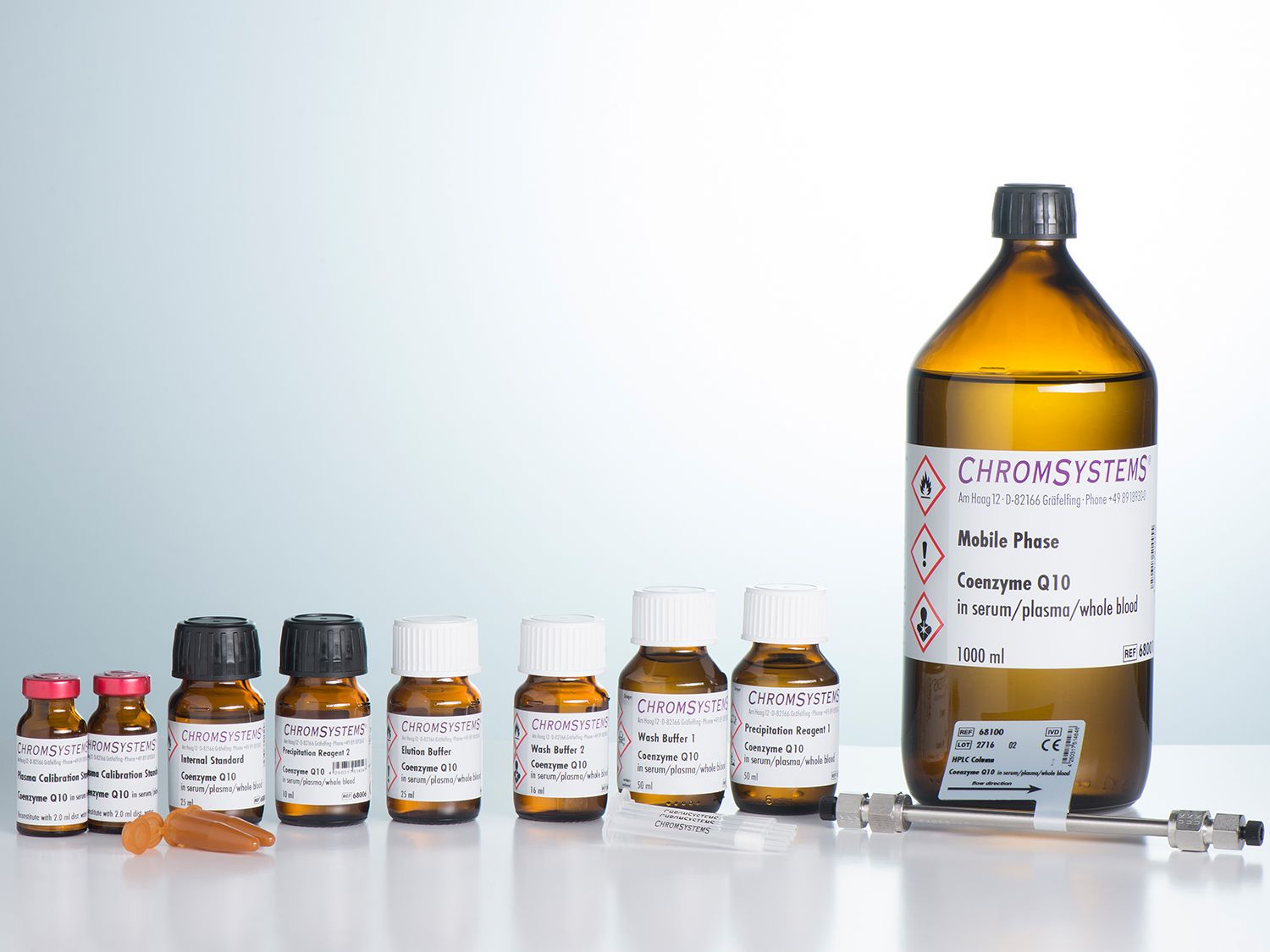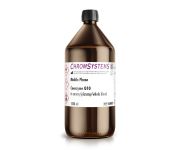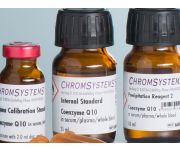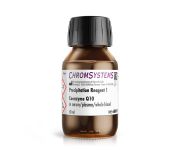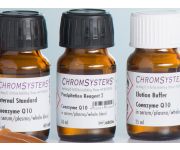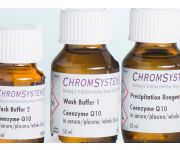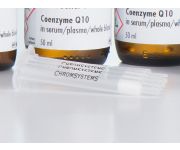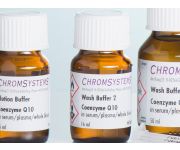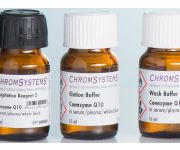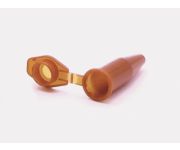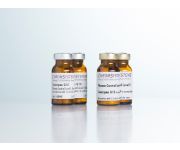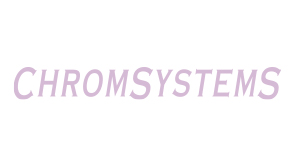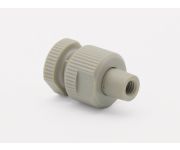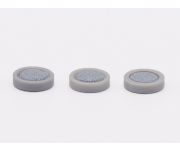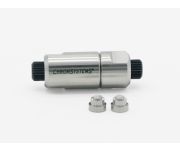Coenzyme Q10 in Serum/Plasma/Whole Blood - HPLC
No liquid-liquid extraction
No evaporation step
Stable standards and controls
CE-IVD validated product ready for IVDR within timeframes and transition periods specified by the IVDR 2017/746
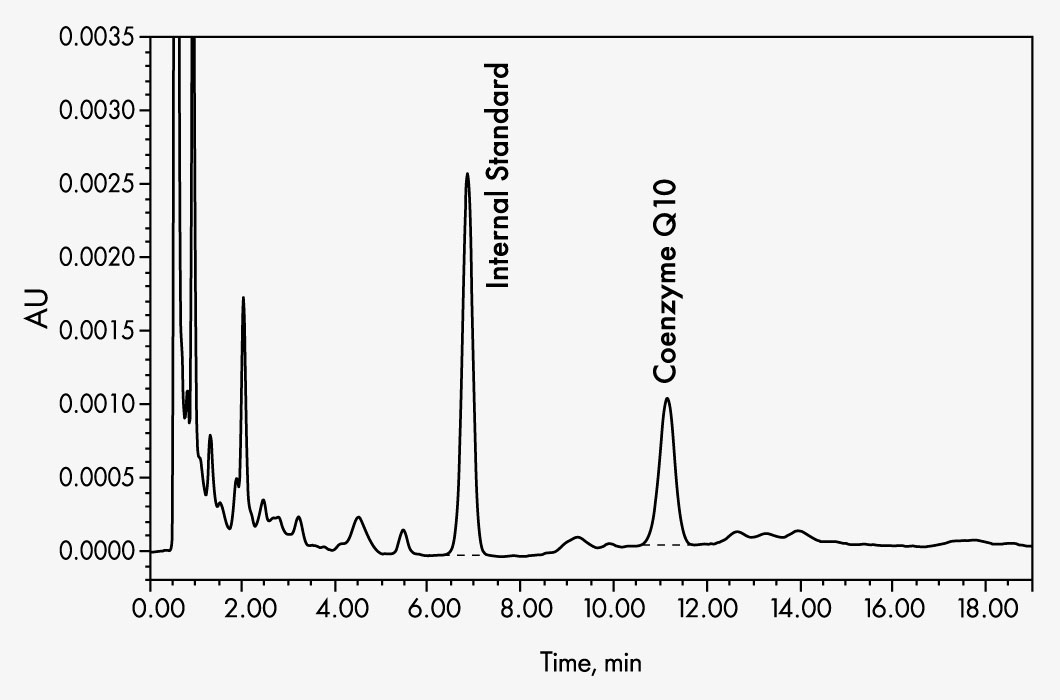

Coenzyme Q10
Clinical relevance
Coenzyme Q10 (ubiquinone, Q10 or UQ) is structurally related to vitamin E and is part of the mitochondrial respiratory chain in many organisms. It is essential for cellular energy production and also acts as an antioxidant in the body. Coenzyme Q10 is ingested with food, but it can also be produced inside the human body. Due to their high levels of energy turnover, heart, lungs and liver exhibit particularly high concentrations of Q10. Deficiencies are rare, but they can be caused by some muscular diseases (myopathy), and then require treatment. It is assumed that a Q10 deficiency may be a cause of cardiovascular disease.
Product advantages
- No liquid-liquid extraction
- No evaporation step
- Stable calibrators and controls
This Chromsystems assay allows the reliable chromatographic determination of coenzyme Q10 in an isocratic HPLC run with UV detection. First, coenzyme Q10 is released by precipitating the proteins and then concentrated using solid phase extraction. Using this method, plasma extraction with neurotoxic hexane and evaporation of the supernatant is avoided. A stable internal standard is used to provide reliable quantification. The separately available quality controls are human matrix-based and produced according to strict standards.
| Method of Analysis | HPLC |
|---|---|
| Number of Tests | 100 |
| Please note | The freely available information on this website, in particular on the sample preparation, are not sufficient to work with our products. Please read instructions and warning notices on products and/or instruction manuals. |
| Lower Limit of Quantitation | 20 µg/l |
| Upper Limit of Quantification | up to 20 000 μg/l |
| Intraassay | CV ≤ 4.8 % |
| Interassay | CV ≤ 5.8 % |
| Recovery | 80 % |
| Specimen | Plasma/Serum/Whole Blood |
| Sample Preparation | Plasma/Serum
Whole Blood
|
| Run Time | 14 min |
| Injection Volume | 50 µl |
| Flow Rate | 2.5 ml/min |
| Column Temperature | ambient (~ 25 °C) |
| Gradient | isocratic |
| Wavelengths | 275 nm |
| Additional Info | Any isocratic HPLC system with UV detector is suitable. |
| Parameters | Coenzyme Q10 |
-
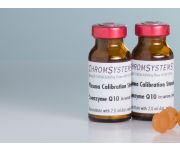 Coenzyme Q10 Plasma Calibration StandardOrder no.: 68003Coenzyme Q10 in Plasma/Serum/Whole Blood – HPLC
Coenzyme Q10 Plasma Calibration StandardOrder no.: 68003Coenzyme Q10 in Plasma/Serum/Whole Blood – HPLC
-
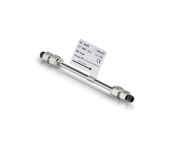 HPLC Column Coenzyme Q10 in Plasma/Serum/Whole BloodOrder no.: 68100Coenzyme Q10 in Plasma/Serum/Whole Blood - HPLC
HPLC Column Coenzyme Q10 in Plasma/Serum/Whole BloodOrder no.: 68100Coenzyme Q10 in Plasma/Serum/Whole Blood - HPLC
-
 Coenzyme Q10 Plasma Calibration StandardOrder no.: 68003Coenzyme Q10 in Plasma/Serum/Whole Blood – HPLC
Coenzyme Q10 Plasma Calibration StandardOrder no.: 68003Coenzyme Q10 in Plasma/Serum/Whole Blood – HPLC
-
 HPLC Column Coenzyme Q10 in Plasma/Serum/Whole BloodOrder no.: 68100Coenzyme Q10 in Plasma/Serum/Whole Blood - HPLC
HPLC Column Coenzyme Q10 in Plasma/Serum/Whole BloodOrder no.: 68100Coenzyme Q10 in Plasma/Serum/Whole Blood - HPLC


Coenzyme Q10
Clinical relevance
Coenzyme Q10 (ubiquinone, Q10 or UQ) is structurally related to vitamin E and is part of the mitochondrial respiratory chain in many organisms. It is essential for cellular energy production and also acts as an antioxidant in the body. Coenzyme Q10 is ingested with food, but it can also be produced inside the human body. Due to their high levels of energy turnover, heart, lungs and liver exhibit particularly high concentrations of Q10. Deficiencies are rare, but they can be caused by some muscular diseases (myopathy), and then require treatment. It is assumed that a Q10 deficiency may be a cause of cardiovascular disease.
Product advantages
- No liquid-liquid extraction
- No evaporation step
- Stable calibrators and controls
This Chromsystems assay allows the reliable chromatographic determination of coenzyme Q10 in an isocratic HPLC run with UV detection. First, coenzyme Q10 is released by precipitating the proteins and then concentrated using solid phase extraction. Using this method, plasma extraction with neurotoxic hexane and evaporation of the supernatant is avoided. A stable internal standard is used to provide reliable quantification. The separately available quality controls are human matrix-based and produced according to strict standards.
| Method of Analysis | HPLC |
|---|---|
| Number of Tests | 100 |
| Please note | The freely available information on this website, in particular on the sample preparation, are not sufficient to work with our products. Please read instructions and warning notices on products and/or instruction manuals. |
| Lower Limit of Quantitation | 20 µg/l |
| Upper Limit of Quantification | up to 20 000 μg/l |
| Intraassay | CV ≤ 4.8 % |
| Interassay | CV ≤ 5.8 % |
| Recovery | 80 % |
| Specimen | Plasma/Serum/Whole Blood |
| Sample Preparation | Plasma/Serum
Whole Blood
|
| Run Time | 14 min |
| Injection Volume | 50 µl |
| Flow Rate | 2.5 ml/min |
| Column Temperature | ambient (~ 25 °C) |
| Gradient | isocratic |
| Wavelengths | 275 nm |
| Additional Info | Any isocratic HPLC system with UV detector is suitable. |
| Parameters | Coenzyme Q10 |
-
 Coenzyme Q10 Plasma Calibration StandardOrder no.: 68003Coenzyme Q10 in Plasma/Serum/Whole Blood – HPLC
Coenzyme Q10 Plasma Calibration StandardOrder no.: 68003Coenzyme Q10 in Plasma/Serum/Whole Blood – HPLC
-
 HPLC Column Coenzyme Q10 in Plasma/Serum/Whole BloodOrder no.: 68100Coenzyme Q10 in Plasma/Serum/Whole Blood - HPLC
HPLC Column Coenzyme Q10 in Plasma/Serum/Whole BloodOrder no.: 68100Coenzyme Q10 in Plasma/Serum/Whole Blood - HPLC
-
 Coenzyme Q10 Plasma Calibration StandardOrder no.: 68003Coenzyme Q10 in Plasma/Serum/Whole Blood – HPLC
Coenzyme Q10 Plasma Calibration StandardOrder no.: 68003Coenzyme Q10 in Plasma/Serum/Whole Blood – HPLC
-
 HPLC Column Coenzyme Q10 in Plasma/Serum/Whole BloodOrder no.: 68100Coenzyme Q10 in Plasma/Serum/Whole Blood - HPLC
HPLC Column Coenzyme Q10 in Plasma/Serum/Whole BloodOrder no.: 68100Coenzyme Q10 in Plasma/Serum/Whole Blood - HPLC

